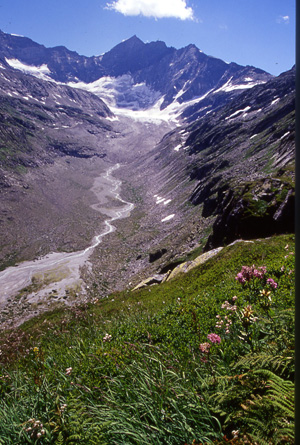Retreating Glaciers reveal hidden life

Scientists investigating life on newly exposed land in front of a retreating glacier have made a strange discovery that turns existing understanding on its head.
Until now it was thought that the first life to inhabit the barren, newly exposed land would be algae, lichens, mosses and other plants which get their energy from sunlight. When these plants die, they provide energy for microbes like bacteria and fungi that decompose this dead plant material making nutrients available for further plant growth.
But new research, published in the Royal Society journal Biology Letters and featured in the New York Times, has discovered a rich diversity of microbes living on newly exposed land which appear to support themselves by feeding on 7000 year-old carbon, which pre-dates the glacier.
Lancaster University ecologists Professor Richard Bardgett and Dr Ian Hartley were part of a team of international researchers that studied newly formed soils at the mouth of the Ödenwinkelkees glacier in the Austrian Alps, which has been retreating by an average of 35 feet per year since 1850.
Professor Bardgett said: “These initial microbial communities used ancient and recalcitrant carbon as an energy source, along with modern carbon. Only after more than 50 years of organic matter accumulation did the soil microbial community change to one supported primarily by modern carbon, most likely from recent plant production.
“This is surprising because it points to a stage of succession before plants colonise newly exposed land.”
The work, which was funded by NERC, was part of a collaborative study with scientists from the University of Vienna, Austria, Germany and the UK.